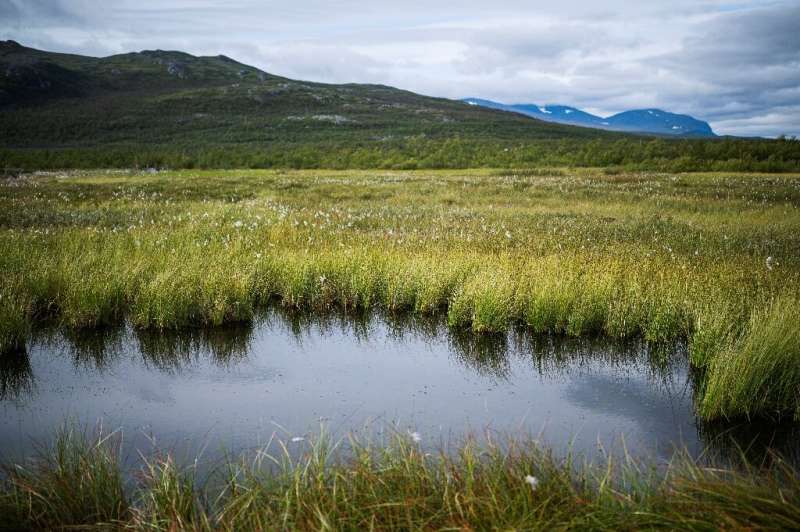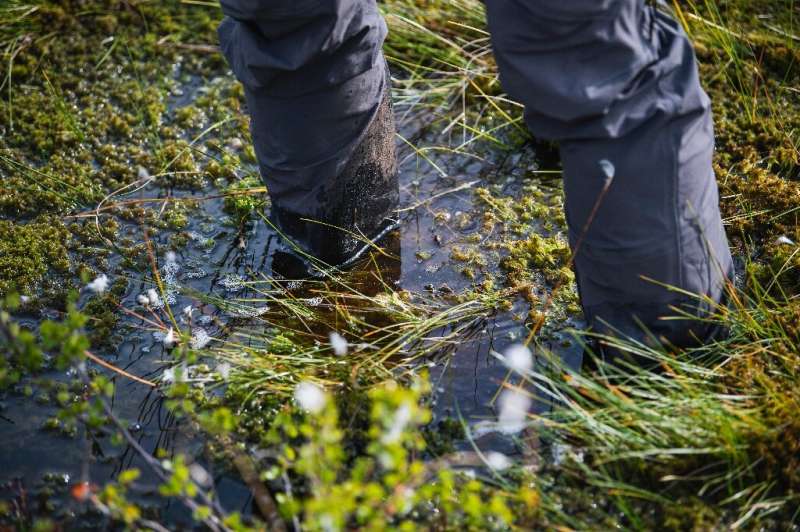Permafrost: a ticking carbon time bomb

Sheltered by snow-spattered mountains, the Stordalen mire is a flat, marshy plateau, pockmarked with muddy puddles. A whiff of rotten eggs wafts through the fresh air.
Here in the Arctic in Sweden’s far north, about 10 kilometres (six miles) east of the tiny town of Abisko, global warming is happening three times faster than in the rest of the world.
On the peatland, covered in tufts of grass and shrubs dotted with blue and orange berries and little white flowers, looms a moonlander-like pod hinting at this far-flung site’s scientific significance.
Researchers are studying the frozen—now shapeshifting—earth below known as permafrost.
As Keith Larson walks between the experiments, the boardwalks purposefully set out in a grid across the peat sink into the puddles and ponds underneath and tiny bubbles appear.
The distinct odour it emits is from hydrogen sulfide, sometimes known as swamp gas. But what has scientists worried is another gas rising up with it: methane.
Carbon stores, long locked in the permafrost, are now seeping out.
Between carbon dioxide (CO2) and methane, permafrost contains some 1,700 billion tonnes of organic carbon, almost twice the amount of carbon already present in the atmosphere.

Methane lingers in the atmosphere for only 12 years compared to centuries for CO2 but is about 25 times more potent as a greenhouse gas over a 100-year period.
Thawing permafrost is a carbon “time bomb”, scientists have warned.
Vicious circle
In the 1970s, “when researchers first started showing up and investigating these habitats, these ponds didn’t exist”, says Larson, project coordinator for the Climate Impacts Research Centre at Umea University, based at the Abisko Scientific Research Station.
…click on the above link to read the rest of the article…